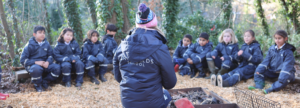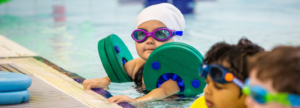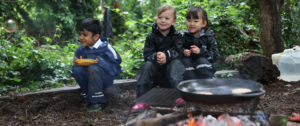Crosfields recently hosted an engaging webinar entitled “Creative Learning at Home”, aimed at transforming the way we think about home-based education. Moving beyond traditional tools like pens, workbooks, and tests, the webinar highlighted the importance of creating a nurturing home environment that fosters holistic development.
The webinar emphasised creative learning strategies that are not limited to specific curriculum areas but those that are essential in supporting all aspects of your child’s education. By engaging in these activities, you can significantly contribute to your child’s growth and love of learning.
Everyday Objects as Tools for Creativity
During the webinar, we explored how everyday objects can be transformed into powerful tools for imaginative play and learning. Here are some highlights:
- Jugs and Plastic Bottles: Children love playing with water, making bath time, or outside play, a fantastic learning opportunity. Use empty shampoo bottles, measuring jugs, funnels, and even a short length of hose pipe to create exciting water play experiences.
- Torch: Light is fascinating for young children. Use a torch to make funny faces in the dark, create shadow puppets, or embark on nighttime adventures in the garden with a head-torch.
- String: String can be used for tying knots, measuring, creating shapes, or building imaginative forts. It helps develop fine motor skills and can be used for activities like making necklaces, garlands, or string paintings.
Encouraging Imaginative Play
- Cardboard Boxes: Build castles, spaceships, or dollhouses. Let your child take the lead in decorating and building.
- Dressing Up Box: Fill a box with old clothes, hats, and scarves. Watch as your child transforms into different characters, such as a pirate, doctor, or chef.
Supporting imaginative play helps children see endless possibilities in everyday life. Encourage them to take the lead in their own learning and share any ideas you have used to foster imaginative play.
Developing Communication and Vocabulary
Creativity at home can also enhance your child’s communication and vocabulary:
- Picture Scavenger Hunt: Ask your child to find items around the house and describe them in detail.
- Role-Playing: Pretend to run a shop or restaurant to practise conversations and learn new words.
- Word Jar: Create a jar with interesting new words. Pick one daily and explore its meaning and usage.
- Cooking Together: Involve your child in cooking or baking. Discuss ingredients, steps, and tools to build vocabulary related to food and cooking.
Fostering Curiosity and Critical Thinking
Curiosity drives exploration, and critical thinking helps make sense of discoveries. Here are some activities to encourage curiosity and critical thinking:
- Kitchen Science: Mix baking soda and vinegar or observe how ice melts in warm water.
- Nature Walks: Collect interesting objects and ask questions about their texture, shape, and uses.
- Mystery Box: Fill a box with various objects and let your child guess what each item is, based on touch alone.
Be a partner in your child’s curiosity. Explore with them and encourage them to ask questions and discover solutions themselves.
Enriching your child’s learning at home is not about pushing them to be the best at everything. Instead, it is about helping them understand the world through activities, trying new things, and experiencing life in different ways. Support does not have to come from workbooks or formal lessons. It is about being present, playing together, and encouraging their natural curiosity.
For more inspiration, download our “30 Things to Try Before You Are 8” sheet here and start creating memorable learning experiences at home!
Stay tuned for more events and resources from Crosfields to support your child’s educational journey!




